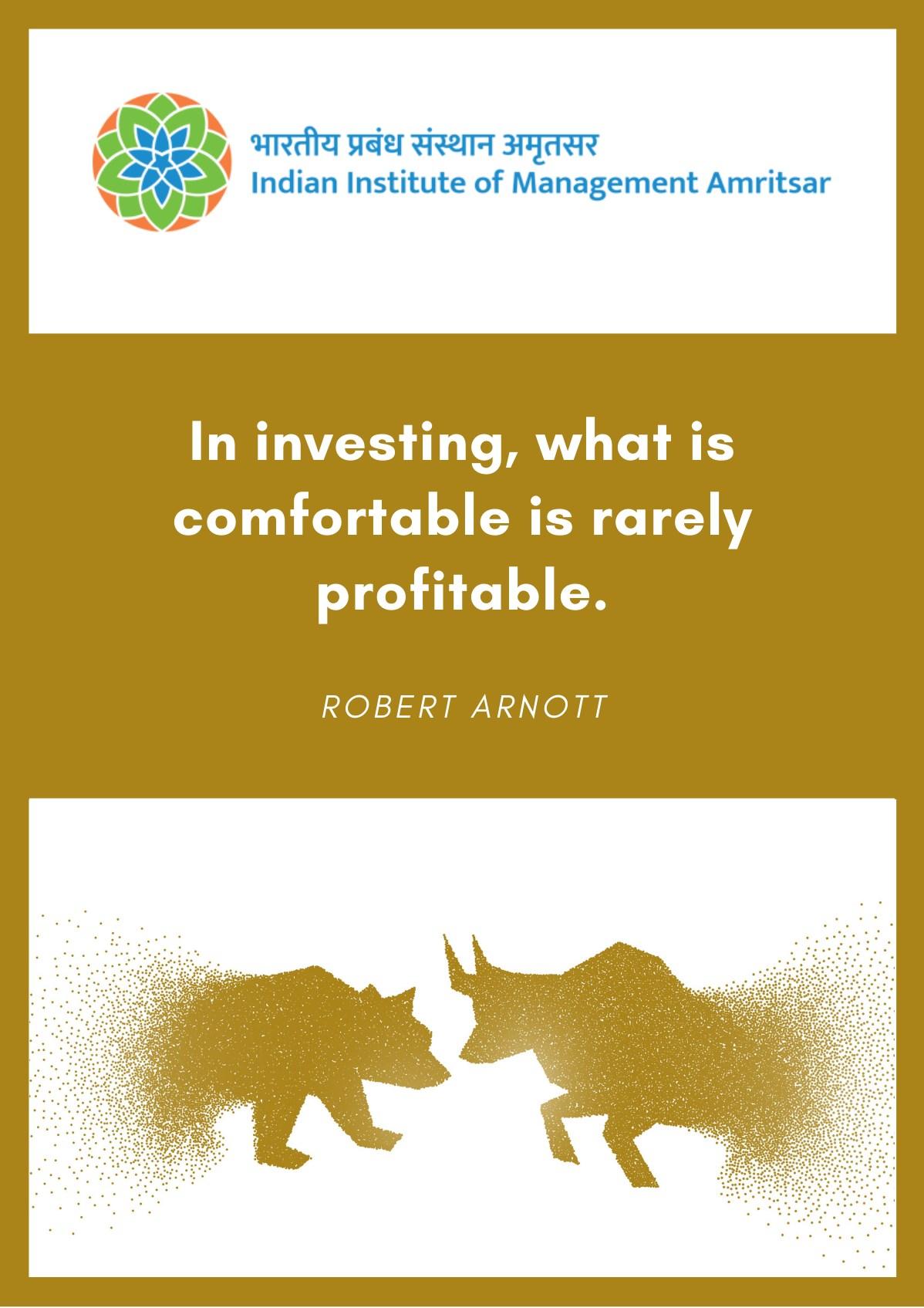
3 minute read
16. TEAM FEC
TEAM FEC
SENIOR COORDINATORS
Advertisement
ADITYA ARORA SAMBHAV JAIN RISHABH JAIN KUSHAGRA KUKREJA
JUNIOR COORDINATORS
SAURODEEP CHATTERJEE
HARSHEEN KAUR
ISHIKA AGARWAL
AMAN MUNDHRA VAIBHAV KAPOOR
CROSSWORD
ACROSS
1. Technical analysts who make investment decisions based on stock trends and charts.
3. When a stock starts trading without rights to an upcoming dividend. 4. A position in options that does not involve simultaneously owning the underlying asset. 6. Long-term exchange trade options which may not expire for two years or more. 8. Type of analysis which involves the Examination of a company’s ratios in comparison to those of other companies in the same industry. 11. The process of earning profits on profits, which creates an exponential increase in wealth over time. 14. The practice of taking on debt to make an investment, which magnifies gains as well as losses. 17. A large sell-off of securities that causes a sharp reduction in price. 20. When a broker requires an investor to send in money in order to cover losses sustained in the market, particularly when the investor is borrowing on margin from the broker.
21. Trades that are usually large and majorly carried out by institutional investors.
23. A rolling horizontal list of stock symbols and current financial information about the stock, including its current market price. 25. A stock order that must be executed as soon as it reaches the trading floor or it is canceled.
27. Analysis of a company’s financial ratios over time, to see if they are improving or deteriorating. 28. An individual who sells an option. 29. Low-grade bonds that are deemed more likely to default. 30. Funds that focus on asset allocation and frequently contain a mix of equities and fixed income securities.
DOWN
2. The process of filling orders from one’s own inventory rather than going to an exchange. 5. The period of inflation due to irrational exuberance on the part of investors and the belief that prices will continue to rise indefinitely.
7. Key stocks that may be indicators of the economy’s direction
9. The process of buying stock based on the belief that it will continue to rise, without doing research. 10. The method of analysis used by long-term investors that there is a strong long-term correlation between a company’s ability to generate profits and the performance of its common stock.
12. Failure to meet credit obligations. 13. A strategy designed to reduce risk by offsetting an existing position in the spot asset with a position in the futures market
15. When an investor sells off a stock after sustaining a loss and then repurchase it after less than 30 days. 16. from a specific country or geographic region country funds 17. Investors who choose stocks that are out of favor, with the intent of capturing gains once the stock becomes popular again. 18. The final stage in the investing cycle when the individual has more money than they will ever need and thus begin to consider to give money to charities and heirs
19. The difference between the price at which a security is sold and the amount the owner receives after the broker takes his cut.
22. The price difference between what the client pays and what the broker pays when the broker’s firm acts as a principal or dealer, selling shares from inventory. 24. Another name for the New York Stock Exchange, the oldest and largest securities market. 25. A fee charged for new money invested in a mutual fund.











